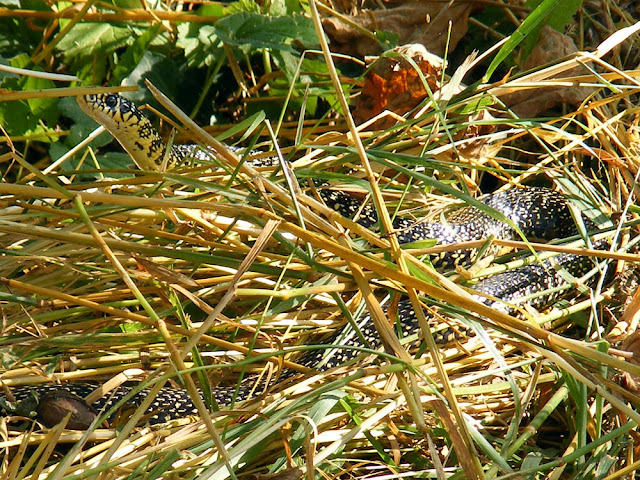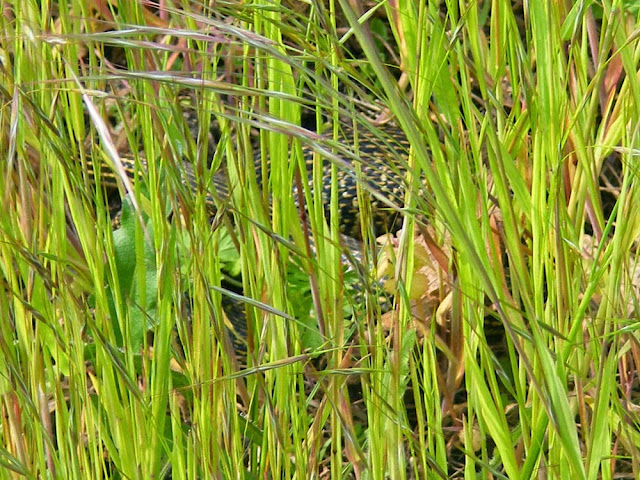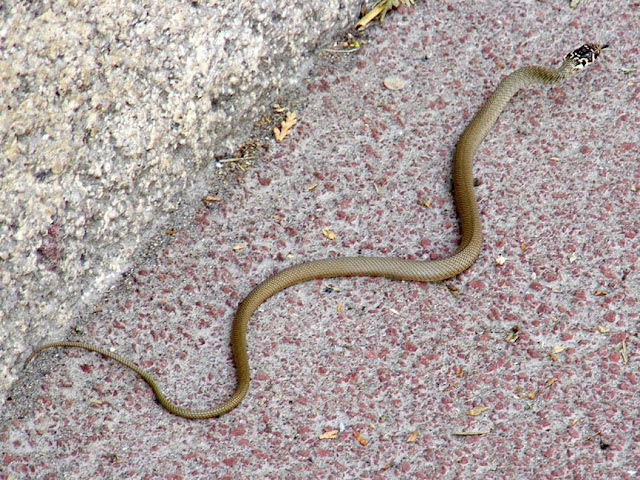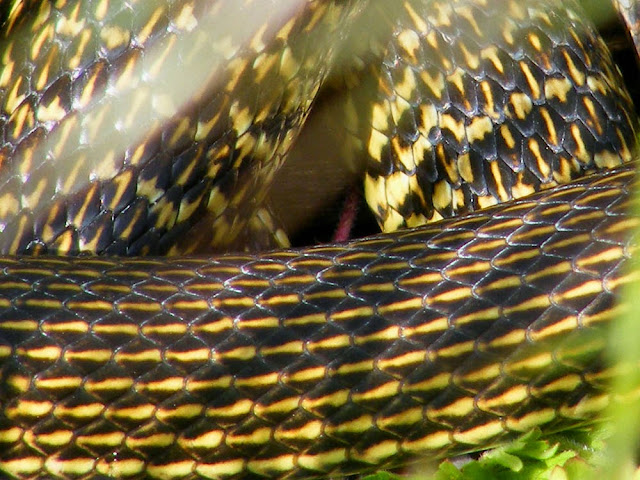Their colour and size is impressive, that's for sure. But although much bigger than a viper at 1 to 1.6 metres long, and in reality black and yellow, not green and yellow as their French name la couleuvre verte et jaune suggests, the Western Whip Snake is completely harmless. It seems the impression that they are green comes from the grass reflecting off their skin.
 |
| Western Whip Snake in our orchard. |
Like many snakes, they like grass and brush, heaths and scrub, so long as they are exposed to the sun, and also stone walls, woodland edges, track sides and hedgerows. As well, they like water and will climb trees to hunt or if they feel threatened. Although mainly present in rural areas, they don't mind abandoned urban peripheries, where they can find their habitual prey of insects, lizards and small rodents. They will also go for nestlings, frogs and sometimes other snakes. From October to April the Western Whip Snake takes refuge in rock piles or unoccupied burrows to hibernate. When the warmer weather returns they moult and the males size one another up to establish which of them will get the chance to mate and pass on their genes to the next generation. In the summer the females will lay four or five eggs in the soil or under rocks. The little ones will hatch, measuring about 20 cm and pale gray or olive in colour at this point.
 |
| Western Whip Snake in our orchard. |
This species is not venomous, and although not timid, they prefer to use their speed and agility to hide in the grass and avoid unexpected encounters. However, if they are cornered, directly threatened or caught they can bite, with small teeth that cause superficial wounds. So don't panic and don't attempt to harm these snakes if you encounter one. The snake will probably flee quicker than you will.
 |
| Juvenile Western Whip Snake in the street in Preuilly sur Claise. |
Western Whip Snakes are not a threatened species. However, they are protected, under a law from 2007, which prohibits the destruction of nests or eggs as well as the capture or disturbance of adults in their natural environment. Sadly, the protection of that natural environment is often undermined by certain agricultural practices.
 |
| Close up of the scales on an adult Western Whip Snake. |
So my advice is to get a bit familiar with your local snakes if you go walking in the countryside, so you don't confuse a nice surprise with a dangerous encounter.

1 comment:
They also climb very well.... we have a very large [female?] that lives in and around the front garden/longeré.... it is around the maximum length and has good girth.... and can irregularly be seen climbing into the gully between the "garden shed" and boilerhouse.... I would love to get a photo of it doing that.
Post a Comment